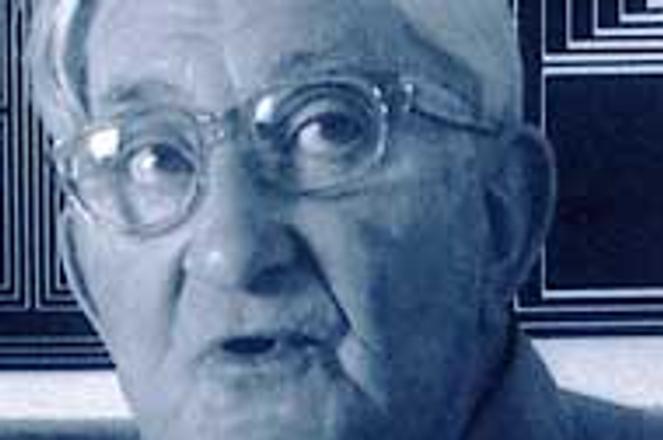JOSEF Albers - a mathematician in art.photo: Courtesy of Milan Dobeš Museum
IT IS STILL rare in Slovakia that a museum is founded by art lovers and connoisseurs, its works drawn from private collections. But such is the achievement of the recently opened Milan Dobeš Museum, which is named after one of the most significant Slovak 'constructivist' artists.
"Friends and admirers of Dobeš's art decided to pull those of his works they owned out of their houses and open them up to the public," said Katarína Hubová, director of the museum, which sits in Bratislava's historical core in a burgher's house built in the 14th century.
"At first they treated it as a bit of fun, but later, after we collected over 200 works, the dream of establishing a museum became a reality."
Organised by the European Cultural Society Foundation and designed by Dobeš's friend, the Italian artist Getulio Alviani, the Milan Dobeš Museum focuses on constructivist and neo-constructivist tendencies in visual arts, which for non-artists means lots of squares and squiggles (in artspeak the terms mean using geometrical elements and colour areas to express oneself).
Dobeš's graphic works, collages and sculptures are permanently displayed on the museum's two lower floors.
The two upper floors, on the other hand, are reserved for temporary exhibitions, which are also organised from private collections. Changing four times a year, they introduce the now-dead founders of the early to mid-20th century constructivist movement, all of whom are entering Slovakia for the first time since the strict rules on art during communism disappeared with the regime's fall in 1989.
Opening last November with the Ukrainian artist Sonia Delaunay, followed by the Italian Bruno Munari, the temporary exhibit space now hosts oil paintings by German Josef Albers (1888-1976).
Despite being better known as a pedagogue than an artist (he taught at two prestigious American art universities), Albers started his career at Bauhaus, a German experimental art school noted for its refined approach to industrial design. Gradually he reached the summit of this art form. Sharpening his focus to form and colour, he expressed himself through basic design elements.
"Although his paintings look simple, in fact they aren't. They are scientific, mathematical works. He forces you to peer at them carefully, and when you do, the objects turn into mind-benders," says Hubová, admitting she at first had no taste for the pictures, but quickly found one.
"Albers' pictures don't strike you at first glance. They behave quietly, slowly entering your mind, and they remain there longer than bold, obvious things," she said.
Albers himself summed up his work in one sentence: "My intention was to create meditative paintings of the twentieth century."
In September, Swiss artist Max Bill will come to replace Albers. Even though the museum is non-commercial, additional works by the world's constructivists can be bought as well as viewed at the neighbouring Komart Gallery.
The Josef Albers exhibition runs at Milan Dobeš Museum (Tue-Sun from 10:00 to 18:00) until September 15 on Zámočnícka 13, Bratislava. Admission: Sk45. Tel: 02/5443-2305.
By Zuzana Habšudová


